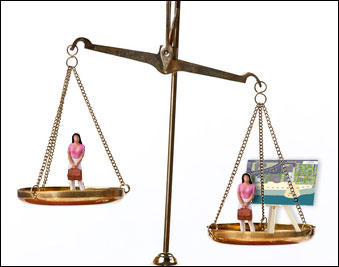A recent study about the best use of litigation graphics during trial reveals some new insights. This study was conducted by Persuasion Strategies, a litigation consulting firm that is part of Holland & Hart, a law firm.
The study team was led by Ken Broda-Bahm, a leader in the art of visual presentation in the courtroom. With a doctorate in speech communication that emphasizes rhetoric and legal communication, Dr. Broda-Bahm is a genuine expert in jury consulting.
In the Visual Persuasion Study, Dr. Broda-Bahm and his team conducted extensive research about the best approach to trial presentation in the courtroom. Their experience, which remains the topic of continued research, reveals that a graphically immersive approach to trial presentation gets the best results with jurors.
In a project that compared various uses of graphics and their effects on potential jurors, Dr. Broda-Bahm wrote, he and his team learned something very important: “The occasional use of graphics is not enough.”
The study looked at 1375 mock jurors and tested five different ways of presenting a defense case: (1) no litigation graphics; (2) flip chart graphics created live; (3) static graphics; (4) animation; and (5) an immersion style of presentation in which animated and static graphics were in constant use.
The team found that in order to obtain the full benefits of visual persuasion, attorneys should be using a continuous approach, giving the jury something to look at in a constant manner, at all times. Instead of following the practice of most attorneys of only using the screen periodically to show a document or image when a particular need presents itself, effective attorneys use graphic immersion -- an approach relying on continuous imagery to reinforce all parts of the message. This approach turns out to be most effective of all the graphic modes that were tested.
Graphic immersion, Dr. Broda-Bahm’s test results concluded, greatly enhanced positive juror response, beyond the results that came from occasional use of static graphics or animation. It is possible that this result springs from the fact that when something is both shown and told to jurors, they engage two separate sensory processing areas of their brain – the auditory cortex and the visual cortex -- thus sharing the cognitive load and making it easy for the brain to process the information.
Dr. Broda-Bahm told me that the study has convinced him that “attorneys should be using PowerPoint throughout opening and closing and the same is true while experts are speaking.”
We believe that as the disciplines of jury consulting and litigation graphics become increasingly intertwined, more study is needed on what are the most effective techniques throughout the trial presentation.







Leave a Comment